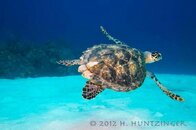Marketing is marketing is marketing..fine! What it seems to you does not matter! Bottom line is this. The Stabilizing Jacket is non-adjustable & allows the air bubble to move freely around the shoulder and all BCD do not allow this, in fact almost none do, aside from the Scubapro stabilizing jacket. This jacket is the most stable in any given position. If you are face up position and overweighted (as most are) a wing can be absolutely annoying. On the surface the Stabilizing jacket has no equal as most bcd's & wings will not be nearly as comfortable.
Those of you find that the jacket squeezes you are either overweight (FAT), overweighted (very likely as this seems to be the norm now) or both (most likely).
The Scubapro Stabilizer jacket was one of the first if not the first bcd available for divers. I think it was available back in the late 70's My first bcd was an early 80s model stab jacket, it is orange and IMO still the best BC I have. The other jackets, adjustable were competitive offerings that could not copy the original design due to patent issues. In the end the adjustable shoulder became more popular due to price & it's adjust-ability; not because it was more stable as it is not!
Anyone who started diving in the 70's and prior was taught and practiced proper weighting out. You had to get this right or you could have problems for there were no BC's (there were horse collars but that is another matter). Tanks were steel & did not go positive when low. If you were properly weighted and physically fit you were good to go and had a very unencumbered diving experience relative to the hyper-equipped diver of today. I see few people who focus on getting weighting absolutely correct as they instead rely on the BC to take up the slack. These are often the ones who complain about the jackets, especially the Stabilizer jacket "squeezing" them. Then they end up going to wings and many then complain about or get all befuddled on the surface because they are again overweighted. Then they add trim weights in the back and over here & there until they are "perfect". Enter "integrated weights" nice idea, was thought of by most of us back in the 80's when pockets on the BC first appeared. I often just grabbed a few rocks on a shore dive and stuck them in the pockets of the Stab jacket when I forgot my weight belt. But now with integrated weights the BC's become IMO a burden. I do not understand why people are adverse to the weight belt? It places the weight on the part of the body that can most easily bear extra weight, the waist/hips. The right hand release is universal so anyone will know how to release them quickly if need be. When i am diving with someone that uses these heavy weighted BC's I find that I end up having to help them on the boat, lift their BC's over the gunnel's or onto the swim platform, what a pain. When i am on a charter boat alone I dread being buddied with another diver who dons too much heavy equipment for the reef or artificial "wreck" that we are about swim around. If i am not the last person back on the boat, I know that I will be hefting someones "rig" with an additional 25-40lb of weight; not good on the back!
This is again all just opinion in the end, I have mine thats for sure and all of you have yours!




